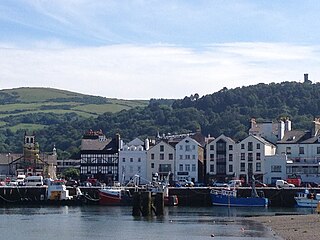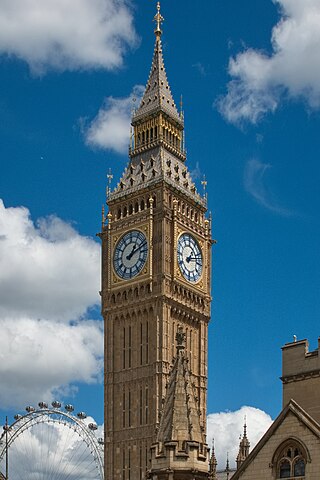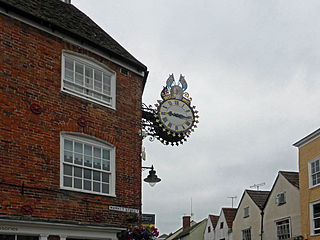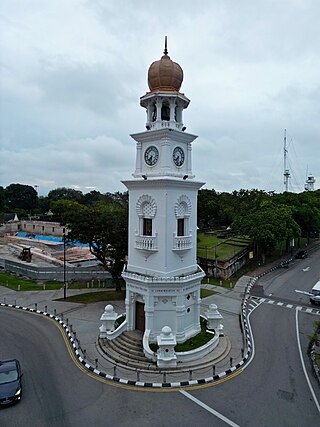
Port Erin is a seaside village in the south-west of the Isle of Man, in the historic parish of Rushen. It was previously a seaside resort before the decline of the tourist trade. Administratively it is designated as a village district, with its own board of commissioners. The district covers around 1 square mile, and is adjacent to: Port St Mary to the south-east; the main part of Arbory and Rushen parish district to the north and east; the sea to the west; and an exclave of Arbory and Rushen parish district to the south. Following recent residential expansion, the settlement is now contiguous with that of Port St Mary, and on 18 July 2018 Tynwald authorised a public enquiry into the proposed expansion of the district boundary to include some of this expansion.

Ramsey is a coastal town in the north of the Isle of Man. It is the second largest town on the island after Douglas. Its population is 7,845 according to the 2016 Census. It has one of the biggest harbours on the island, and has a prominent derelict pier, called the Queen's Pier. It was formerly one of the main points of communication with Scotland. Ramsey has also been a route for several invasions by the Vikings and Scots.

The Queen Victoria Gardens are Melbourne's memorial to Queen Victoria. Located on 4.8 hectares opposite the Victorian Arts Centre and National Gallery of Victoria, bounded by St Kilda Road, Alexandra Avenue and Linlithgow Avenue.

The Tower of Refuge is a stone-built castellated structure which was erected on St Mary's Isle in Douglas Bay, Isle of Man, in order to afford shelter to mariners wrecked on the rock. The tower was constructed through the endeavours of Sir William Hillary, who had been instrumental in several rescues of sailors stranded on the rock, and which culminated in the heroic rescue of the crew of the Saint George Steam Packet Company steamer RMS St George, when it foundered on the rock in the early hours of November 20, 1830. Sir William personally contributed a high proportion of the costs and secured a substantial number of public contributions for funding the structure.

Foxdale is a village consisting of the districts of Upper and Lower Foxdale on the A3 Castletown to Ramsey Road with the junction of the A24 Foxdale to Braaid road and the A40 The Hope road in the parish of Kirk Patrick in the Isle of Man.
The Manx Northern Railway (MNR) was the second common carrier railway built in the Isle of Man. It operated as an independent concern only from 1879 to 1905.

The Elizabeth Tower is the clock tower of the Palace of Westminster in London, England. It contains the Great Clock, a striking clock with five bells. The tower is nicknamed "Big Ben", a name which was originally applied only to the largest bell of the clock. The tower was officially called the Clock Tower until 2012, when it was renamed to mark the Diamond Jubilee of Elizabeth II.

Jubilee clock is a term used in reference to a number of clocks constructed and erected throughout the British Empire in commemoration of the Golden or Diamond Jubilee of various British monarchs, most commonly, Queen Victoria's.
The Foxdale Railway was a 3 ft narrow gauge branch line which ran from St. John's to Foxdale on the Isle of Man.

The Queen Victoria Memorial Clock Tower is an Moorish-style Jubilee clocktower within George Town in the Malaysian state of Penang. Located at the intersection of Light Street and Beach Street, it was built to commemorate the Diamond Jubilee of Queen Victoria in 1897. The tower is sixty feet to the centre of the clock, one foot for each year of Victoria's reign. A corner of the wall surrounding Fort Cornwallis is situated behind the tower. It was donated by Cheah Chen Eok, a local businessman, who provided $30,000 for the purpose, and was designed by Mr. Pierce, Municipal Engineer, Penang, and built by Messrs Barnett and Stark.

Foxdale Station was the southern terminus of the Foxdale Railway in the Isle of Man.

The Great Snaefell Mine, also referred to as the East Snaefell Mine, was a zinc mine located high in the Laxey Valley on the slopes of Snaefell Mountain, in the parish of Lonan, Isle of Man. The mine reached a depth of 1,188 ft (362 m) and is remembered as the scene of the Isle of Man's worst mining disaster in 1897.

The Great Laxey Mine was a silver, lead ore and zinc mine located in Laxey, in the parish of Lonan, Isle of Man. The mine reached a depth in excess of 2,200 ft (670 m) and consisted primarily of three shafts: the Welsh Shaft, the Dumbell's Shaft and the Engine Shaft; each of these shafts was connected by a series of levels.
The Isle of Man Mining Company, also referred to as the Foxdale Mining Company, was a mining company formed to operate the Foxdale Mines on the Isle of Man.
The Maughold Head Mine was a copper mine located in the parish of Maughold, Isle of Man.
The Maughold Head Mining Company was a mining company formed to explorate around the area of Maughold Head on the Isle of Man. The company's registered offices were at 30, John St, Bedford Row, London.

William Henry Kitto was Captain of the Foxdale Mines, vice-chairman of the Isle of Man Steam Packet Company, a director of the Isle of Man Railway and a Justice of the Peace who became a Member of the House of Keys for the constituency of Glenfaba in 1902.

The Foxdale Mines is a collective term for a series of mines and shafts which were situated in a highly mineralised zone on the Isle of Man, running east to west, from Elerslie mine in Crosby to Niarbyl on the coast near Dalby. In the 19th century the mines were widely regarded as amongst the richest ore mines in the British Isles.

The Jubilee Clock Tower, striking clock, and drinking fountain, is a Grade II listed building in the village of Churchill, North Somerset, built to commemorate the Diamond Jubilee of Queen Victoria in 1897. It stands on a plot between Dinghurst Road and Front Street, and is a prominent landmark at the entrance to the village. Designed by Joseph Foster Wood of Foster & Wood, Bristol, the tower is made of local stone and is of perpendicular Gothic style.

The Hokitika Clock Tower, initially called the Westland War Memorial and then the Coronation and War Memorial, is a prominent landmark in Hokitika, New Zealand. The memorial was initiated, fundraised for, and carried out by a committee, to commemorate the region's contribution to the Second Boer War; not just the four local men who had died but all 130 who had gone to war in South Africa. An additional purpose was to provide Hokitika with a town clock.


















